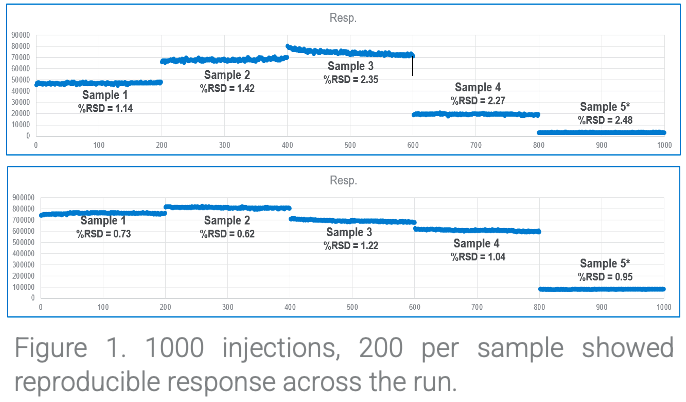Posted by Chrom Tech on 14th Oct 2025
What LC Column Should I Use for EtG and EtS Detection?
Ethyl glucuronide (EtG) and ethyl sulfate (EtS) are direct metabolites of ethanol produced in the liver after alcohol consumption. These highly polar compounds are excellent biomarkers for recent alcohol intake and can be detected in urine samples for 2 to 80 hours post-consumption. However, due to their polarity, EtG and EtS are difficult to retain and separate using traditional reversed-phase chromatography. In a recent Agilent study, researchers successfully analyzed EtG and EtS using a hybrid end-capped charged surface C18 (CS-C18) column in combination with LC/MS/MS, demonstrating improved retention, reproducibility, and peak shape for these challenging analytes.
Experimental Method
A straightforward “dilute and shoot” sample preparation approach was used in this study. Urine samples were spiked with EtG and EtS standards prepared from a working stock solution. Calibrators, controls, and test samples were each spiked with an internal standard and then diluted 1:50 in mobile phase A. Following dilution, samples were injected directly onto an Agilent InfinityLab Poroshell 120 CS-C18 column.
Results and Discussion
The study demonstrated excellent reproducibility for both EtG and EtS across multiple concentrations, with stable retention times and consistent peak areas. Over 1,000 injections were successfully performed without significant loss of performance—highlighting the robustness of the CS-C18 column for long-term use in high-throughput settings.

Key Performance Observations:
- Simple sample preparation using a dilute and shoot workflow.
- High dilution and low injection volume resulted in optimal peak shape and signal stability.
- Consistent reproducibility across hundreds of injections with minimal drift.
- Preliminary results suggest excellent suitability for high-throughput laboratories due to short run times and simplified workflow.
Conclusion
The data from this study confirm that the Agilent InfinityLab Poroshell 120 CS-C18 column provides reliable retention and reproducibility for the analysis of EtG and EtS using LC/MS/MS. High dilution and controlled injection volumes yielded sharp, symmetrical peaks and stable results over extended runs. While additional studies are needed to evaluate long-term column lifetime and full robustness, these preliminary results indicate that this method is ideal for high-throughput toxicology and forensic laboratories seeking to monitor alcohol biomarkers efficiently.
For additional details on CS-C18 column performance or to request technical guidance, contact our chromatography specialists or explore our HPLC column selection at Chrom Tech.
Frequently Asked Questions About EtG and EtS Analysis
What are EtG and EtS, and why are they important?
EtG (ethyl glucuronide) and EtS (ethyl sulfate) are ethanol metabolites used as biomarkers to detect recent alcohol consumption. They remain in urine for up to 80 hours after drinking, making them ideal for clinical and forensic alcohol testing.
Why are EtG and EtS difficult to analyze?
Both EtG and EtS are highly polar, which makes them difficult to retain on conventional reversed-phase columns like C18. Specialized stationary phases, such as Agilent’s CS-C18, provide improved retention through optimized surface chemistry and end-capping design.
What advantages does the CS-C18 column offer for EtG/EtS analysis?
The CS-C18 column enhances retention and resolution of polar metabolites while maintaining high efficiency and reproducibility. It also supports high-throughput workflows with fast equilibration and consistent peak shape.
Can this method be used in high-throughput testing labs?
Yes. The short run times, stable performance, and simple dilute-and-shoot preparation make the CS-C18 method ideal for high-volume clinical, toxicology, and forensic laboratories.

